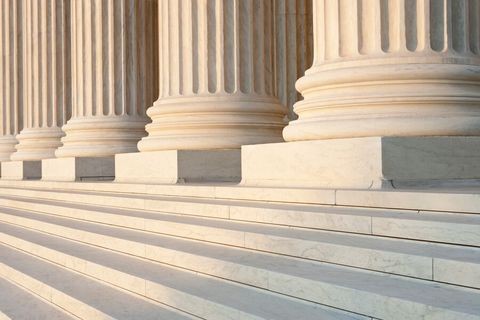Proposed Revisions to Interagency Leveraged Lending Guidance
Client Alert | 3 min read | 04.04.12
On March 26, 2012, the Office of the Comptroller of the Currency, the Board of Governors of the Federal Reserve System, and the Federal Deposit Insurance Corporation (the "Agencies") issued "Proposed Guidance on Leveraged Lending" (the "Guidance"),1 which will replace guidance issued in 2001. The Agencies are seeking comments on or before June 8, 2012. The Guidance is targeted at lending practices encompassing the entire debt structure of a leveraged borrower including senior loans, letters of credit, mezzanine tranches, and senior and subordinated bonds. It is anticipated that the Guidance will impact large and global banking institutions, as the majority of community banks and smaller institutions have little exposure to leveraged credits.
As an outgrowth of the recent financial crisis, the Agencies have become acutely aware of the need for leveraged lenders to refocus on prudent underwriting practices and to reassess the propriety of debt agreements that provide relatively little lender protection, such as covenant "lite" transactions and PIK-toggle features in junior debt instruments. The Agencies expressed concern over the capital structures and repayment arrangements in certain transactions, which have been shown to be aggressive in light of the overall risk of the credit. When coupled with a current pipeline of aggressively priced and structured commitments, participation in leveraged finance transactions by non-regulated investors, and a concern that many financial institutions have management information systems that the Agencies deem to be less than satisfactory for accurately reporting credit exposure on a timely basis, the Agencies decided to address this potentially volatile area of the financial sector.
The Guidance will require that an institution adopt a risk management framework that has an intensive and frequent review and monitoring process. It is important to note that if it is determined during a regulatory examination that an institution with a significant leveraged debt portfolio is found to lack robust risk management processes and controls, such a determination could contribute to a finding that the institution is engaging in unsafe and unsound banking practices. Financial institutions should be aware that the Guidance will address minimum regulatory expectations in a variety of areas, including:
- definition of leveraged finance
- general policy expectation
- underwriting standards
- valuation standards
- pipeline management
- risk ratings
- credit analysis
- problem credits
- deal sponsors
- reputation risk
- compliance
The Guidance is consistent with the ongoing Agency focus on enterprise risk management and the need for careful assessment of risk appetite and risk mitigation protocols. The Guidance highlights concepts that should already be embedded in the day-to-day business operations of financial institutions. However, if the Guidance is issued as proposed, the heightened scrutiny suggested in the Guidance could have a significant operational and financial impact on those institutions with significant leveraged lending business lines.
Now is the time for financial institutions to assess their leveraged loan portfolios with counsel. Our lawyers regularly work with financial institutions to assess and to suggest strategies to mitigate embedded legal and business risks in a single credit facility or an entire portfolio of commercial credits. While the final parameters of the proposed Guidance are to be determined, we would welcome an opportunity to help your company deal with its higher-risk credits.
1 Click here for copy of the proposed Guidance [PDF]. Comments may be submitted through the Federal eRulemaking Portal: www.regulations.gov and then following the instructions for submitting comments for the "Guidance on Leveraged Lending."
Contacts
Insights
Client Alert | 2 min read | 11.14.25
Claim construction is a key stage of most patent litigations, where the court must decide the meaning of any disputed terms in the patent claims. Generally, claim terms are given their plain and ordinary meaning except under two circumstances: (1) when the patentee acts as its own lexicographer and sets out a definition for the term; and (2) when the patentee disavows the full scope of the term either in the specification or during prosecution. Thorner v. Sony Comput. Ent. Am. LLC, 669 F.3d 1362, 1365 (Fed. Cir. 2012). The Federal Circuit’s recent decision in Aortic Innovations LLC v. Edwards Lifesciences Corp. highlights that patentees can act as their own lexicographers through consistent, interchangeable usage of terms across the specification, effectively defining terms by implication.
Client Alert | 6 min read | 11.14.25
Microplastics Update: Regulatory and Litigation Developments in 2025
Client Alert | 6 min read | 11.13.25



